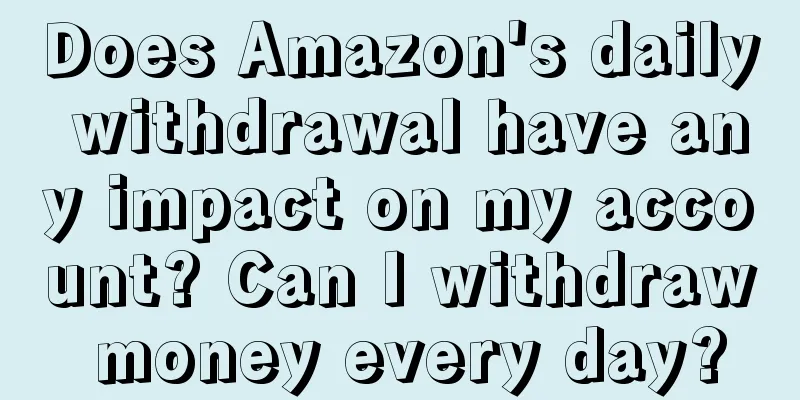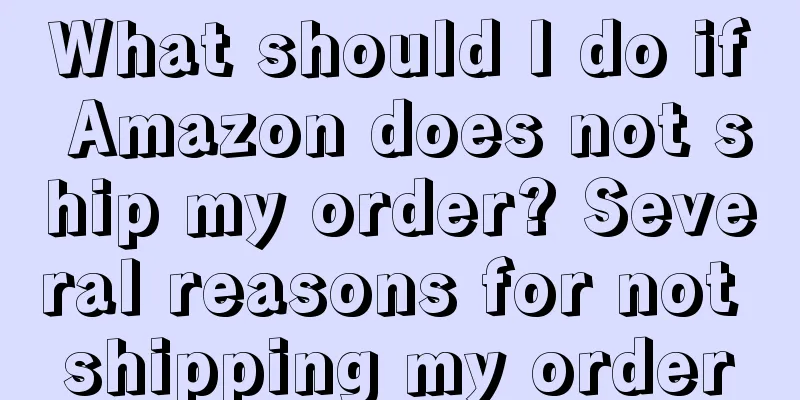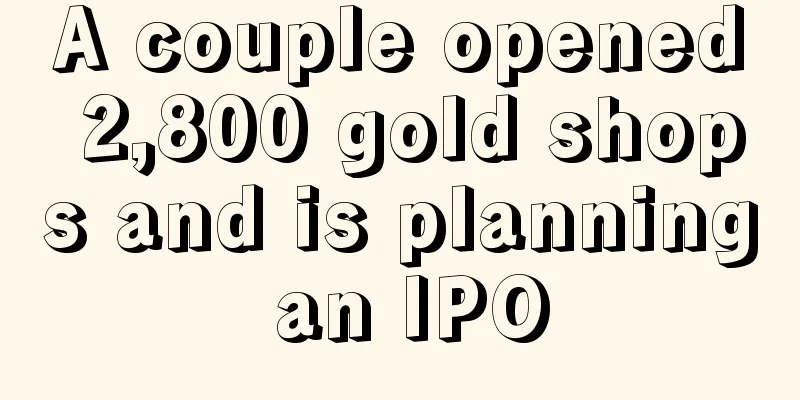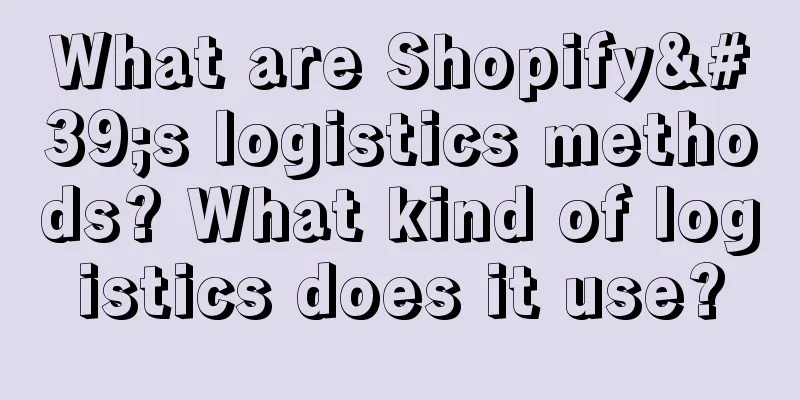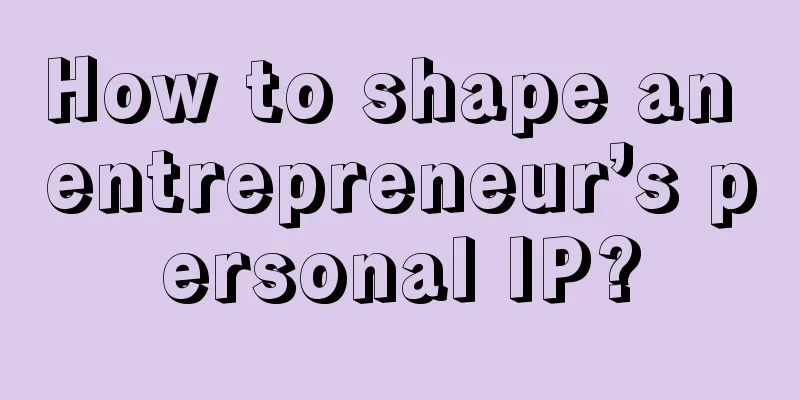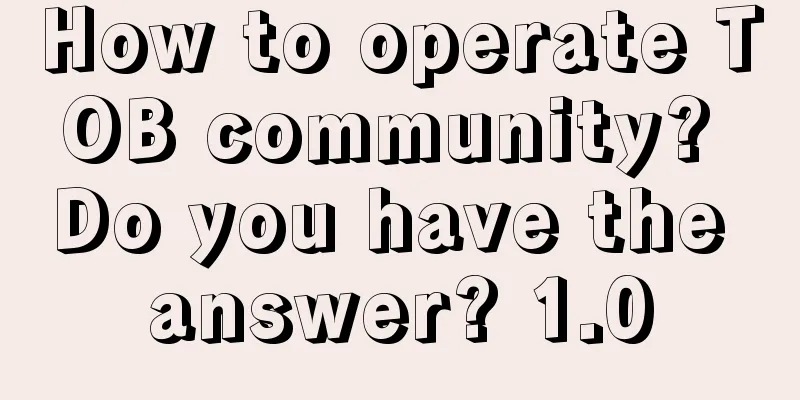Understanding emotional marketing in one article: a comprehensive analysis from strategy to execution
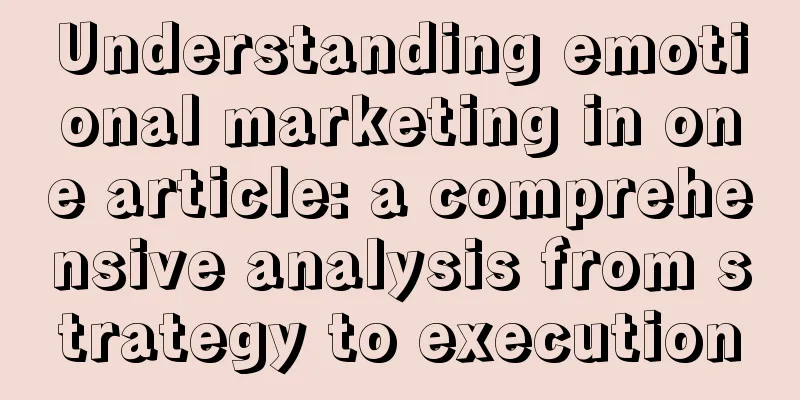
Love and business, though seemingly completely different, have one thing in common: value. There are two kinds of values in love, one is economic value, and the other is emotional value. There are two kinds of values in consumption, one is functional value (also called use value), and the other is also emotional value. In the field of market consumption, emotional value is not only an emotional experience, but also a psychological resonance. It touches the deep emotions of consumers and stimulates dopamine and other chemical reactions of pleasure. Similar to the passion and attachment in love, emotional value also has very practical applications in business. The marketing method that uses emotional value can be called "emotional marketing." Dopamine dressing is a vivid example of emotional marketing. It not only considers the functionality of clothing, but also focuses on how to stimulate consumers' pleasure and self-confidence through factors such as color and design. When people wear a piece of clothing that makes them feel confident and satisfied, dopamine surges and a feeling of emotional pleasure comes with it. This emotional connection makes people willing to buy more fashion products, not just to meet basic clothing needs. Dopamine dressing is just the tip of the iceberg of emotional marketing. More and more brands are actively adopting this strategy, such as food, travel, electronic products, etc., all trying to create pleasant and satisfying emotional experiences to attract consumers. This article will talk about emotional marketing. 1. The Origin and Evolution of Emotional MarketingEmotional marketing is not a new concept, but it did not exist from the beginning. Advertisements first appeared in print media in the form of text. These ads focused on conveying the functional characteristics of products or services, emphasizing rational information. For example, newspaper ads in the 19th century often included a description of the product, price, and features, with the goal of attracting potential customers through logic and rationality. These ads focused more on the functional value of the product. Early Coca-Cola ads Around the mid-19th century, a new printing technology emerged that could transform photographs or paintings into prints, allowing images to be reproduced and distributed in large quantities. This technology promoted the development of graphic advertisements and posters, and also provided new opportunities for the advertising industry. Now it seems that the emergence of image advertising can be called an advertising revolution. With images as an auxiliary means, advertisements began to use various visual rhetoric techniques to create and express emotions, such as metaphors, symbols, contrast, exaggeration, etc. These techniques stimulate consumers' emotions by increasing the artistry and beauty of advertisements. At this point, it can be said that emotional marketing has gradually begun to occupy the mainstream of marketing. An iconic example is the advertising of the Coca-Cola Company, which introduced the image of Santa Claus in the 1920s and 1930s, which brought joy, togetherness and emotional satisfaction. This image not only linked the product with emotions, but also linked the brand with a specific emotional experience. In the early 20th century, new media such as film, radio and television began to emerge, making advertising richer, more diverse and more persuasive. The emergence of these new media has also spawned a group of new advertising creative talents who use the language of images to tell the story of the brand and convey the brand's emotions. They use elements such as plot, music, color, and lens to create a variety of emotional effects, such as warmth, humor, surprise, and shock. The golden age of advertising also began to arrive. Looking back at the works of the golden age of advertising, we will find that those works basically used emotion as the main communication point. 2. The underlying logic of emotional marketingThe business world has all been aware that emotional marketing is more effective than rational marketing, and of course they have data to show that emotional marketing brings better returns. But it was not until psychology began to be integrated into marketing that the question of why emotional marketing is more effective was given a clear answer. In 1986, American psychologist Richard Petty and his partner John Cacioppo proposed the Elaboration Likelihood Model (ELM). The ELM model believes that there are two models of human persuasion, namely the central path and the peripheral path. In the central path, people will think rationally and make decisions after careful consideration, while in the peripheral path, people are usually unwilling to spend too much energy to analyze the problem and are more easily persuaded by superficial factors. The essence of marketing is to persuade consumers, so emotional marketing corresponds to the formal peripheral path. In 2002, Israeli Daniel Kahneman won the Nobel Prize in Economics. In his book Thinking, Fast and Slow, he divided human thinking into two systems:
His and Tversky's research found that people are not completely rational when making decisions, but often make irrational and uneconomical decisions. In other words, when people make decisions, fast thinking plays a much greater role than slow thinking. In terms of marketing, slow thinking is emotional marketing, and is also a peripheral path. The essence of emotional marketing is to mobilize consumers' emotions rather than rationality, so that they will develop a favorable impression of the brand under the stimulation of emotions and promote orders. In today's advertising, most brands are increasingly appealing to emotions and operating emotional marketing. Which of the following two ways of thinking when buying a laptop do you follow?
Most girls may be attracted by the pink thin and light notebook and not pay much attention to its configuration. In fact, most laptop advertisements will highlight the laptop's appearance, color, thinness, fashion and other elements. It is rare for a laptop to describe its configuration in great detail in an outdoor advertisement. Pringle and Field did a study. They compared the difference in profit growth created by the communication activities that took the emotional route and the rational route. The results showed that the average growth created by the emotional route was 31%, which was almost double the 16% of the rational route. Explore the reasons behind:
Emotional marketing appeals to the emotions and is able to stimulate consumers. In a beer advertisement, a man is sitting on the beach with a beer in his hand, and a beautiful woman is leaning on him. The advertisement gives people an emotional suggestion that drinking this brand of beer can attract beautiful women and gain happiness. From a psychological perspective, emotional marketing can stimulate consumers' quick thinking, which is the essential reason why this marketing method is more effective. 3. Main Categories of Emotional MarketingTo do emotional marketing, we must first understand our emotions. Human emotions can be generally classified into several categories. In ancient China, there was a saying about seven emotions and six desires, among which the seven emotions refer to joy, anger, sorrow, fear, love, hate, and desire. This is close to what we call emotions now. Paul Ekman identified six basic emotions in 1972: anger, disgust, fear, happiness, sadness and surprise , and each emotion can be identified through facial expressions, as shown below: Of course, many scholars later made many classifications of emotions, but the major categories still cannot escape Paul Ekman’s six emotions. Emotional marketing is about stimulating consumers’ quick thinking and using their various emotions to influence their purchasing decisions and brand loyalty. If we draw a coordinate axis, we can see that when doing emotional marketing, brands should try to avoid the calm emotions in the lower right corner, because this corresponds to the rational thinking of consumers. They should stimulate their emotions such as happiness, surprise, anger, fear, etc. in the upper part and use these emotions to influence consumers' consumption behavior. Next, let’s talk about the marketing corresponding to these emotions with the help of cases. 1. Happiness: Encouragement, healing, companionshipHappiness is the most commonly targeted emotion in emotional marketing. The scope of happiness is actually very large. As long as it can bring positive and happy emotions to consumers, it belongs to marketing that uses happy emotions. The happiness that Coca-Cola has always advertised is the most typical representative. There are many branches of happiness, such as motivation, healing, and companionship, which are all typical emotions. It is said that Keep once earned over 500 million yuan from selling medals. Keep relied on motivating consumers to achieve their goals, giving them rewards, and ultimately bringing happiness to consumers. In 2018, the Travel Frog swept across China. This frog was loved by many users because it was cute and its main behavior was to quietly read books, write letters, and travel alone. This quiet behavior healed many young people who were under great pressure. Here, the Travel Frog brought happiness to users through healing. Haidilao's service has always been talked about in the industry. It provides comprehensive and considerate services, such as manicure, glasses washing, mobile phone film... If you go to eat hot pot alone, you will find a little bear to sit with you. These services that have nothing to do with eating hot pot have become the standard service of Haidilao. Behind the comprehensive service is actually a kind of companionship, which can bring happiness to consumers. 2. Surprise: surprise, unexpectedThe most typical example of using marketing to stimulate consumers' sense of surprise is the blind box, which has an extremely strong stimulation on dopamine. Blind box brands always launch various hidden items, which contain the possibility of surprises. When a person has the idea of buying a blind box, dopamine starts to work, trying to make him buy a new or hidden blind box. At the moment of opening the blind box, if he gets the hidden item, the surprise emotion reaches its peak. If he does not get the hidden item, after a little disappointment, he will still try to buy the possibility of surprise again one day. 3. Fear, anger, disgustAnger, fear, and disgust are highly stimulating negative emotions. What brand marketing should do is not to use these negative emotions to stop consumers from consuming, but to stimulate them in the opposite way. You feel angry, fearful, or disgusted because of nothing in your life, so you should make changes. My products are the products that can help you change. The most typical example of fear is anti-smoking advertisements, which use exaggerated artistic expression techniques to awaken consumers' fear and persuade them not to smoke. Other types of marketing include guiding consumers to choose low-fat and low-calorie products by describing the problems caused by obesity, and encouraging consumers to choose safer cars by exaggerating the consequences of traffic accidents. This year, Li Jiaqi caused anger and disgust among netizens because of his words that Hua Xizi "79 yuan is not expensive", and this sentence inadvertently touched the feelings of many people towards old domestic products. Therefore, these old domestic brands took the opportunity to launch live streaming marketing on platforms such as Douyin. They used high cost-effectiveness and domestic conscience as selling points, attracted the attention and purchases of a large number of consumers, and created amazing traffic and sales. Here, the old domestic brands are taking advantage of the consumers' anger. Of course, this is not a proactive marketing effort by these old domestic brands, they are just taking advantage of this emotion of consumers. Huawei's Mate 60 series phones have been selling well this year, and some data show that their sales have surpassed Apple's. Behind Huawei's strong sales is actually consumers' disgust with US sanctions. Netizens see the purchase of Huawei's Mate 60 series phones as a response to the United States, and also as a reflection of China's technological strength and national pride. 4. Sadness: sadness, sympathy, mourningSadness is a negative emotion with a relatively low level of stimulation, but note that its level of stimulation is still higher than calmness on the coordinate axis, so this emotion can also be stimulated. In recent years, when the overall social sentiment is not as high as it was ten years ago, it has become easier to stimulate this emotion. The essence of sad emotion marketing still has a certain positive significance. It tells consumers not to keep sadness in their hearts, but to express it, so that they can feel better and be better able to face problems. For example, UCC Coffee cooperated with Lin Yusheng, a Facebook influencer who created the slogan "A little negative energy every day", to call on everyone to share negative energy and express their inner troubles. The customized copy provided by Lin Yusheng received a huge number of likes on Facebook and spread from Facebook to Moments. 4. How to do emotional marketing well?The above are some cases of applying emotional marketing. Through these cases, I believe you can also see some methodologies for doing good emotional marketing. Let me summarize them below. 1. Make rational use of highly stimulating emotions.The most basic premise of emotional marketing is to stimulate consumers' emotions and prevent them from falling into calm and rational analysis. Therefore, marketing should generally avoid didactic or logical marketing. Emotional marketing should focus on stimulating highly stimulating emotions, such as happiness, surprise, fear, and anger in the coordinate axis, in order to touch the emotional emotions of consumers. Coca-Cola's ads often convey a happy atmosphere, so that consumers can also be infected with happiness. Blind boxes, for example, stimulate the release of dopamine by making consumers look forward to the element of surprise, prompting them to buy more blind box products and pursue more surprises. These are all uses of high-stimulation emotional marketing. 2. Create surprises with innovationInnovation is the key to emotional marketing, both in the product itself and in the marketing strategy. Innovation can bring a sense of freshness and surprise to consumers, increasing the appeal and influence of the brand. For example, Luckin Coffee has frequently innovated in this regard. The "Jiangxiang Latte" jointly launched with Moutai broke the inherent impression of traditional coffee, aroused the curiosity and interest of consumers, and made this coffee a big seller. It has co-branded with various IPs, such as JOJO, Sad Frog, etc., and attracted a large number of fans and potential customers with the influence of popular culture. 3. Provide positive emotional valuesBrands can stimulate consumers' emotions and resonate with them by conveying positive emotional values, such as happiness, freedom, creativity, dreams, etc. For example, Apple’s advertisements often emphasize the brand’s innovation and subversion, encouraging consumers to pursue differences and personalization. Its Think Different advertisements resonate with many consumers who pursue personalization. For example, Nike’s advertisements often show the athletes’ fighting and challenging spirit. Its Just do it brand value constantly inspires consumers to pursue self-transcendence and excellence, bringing emotional value to consumers. 4. Create resonance and inspire sharingBrands can establish emotional resonance with consumers and encourage consumers to actively share with others by creating content marketing that tells stories, is humane, and has social significance. For example, the marketing of sadness in recent years, although it is a negative emotion, it hits the inner emotions of consumers, and the self-deprecation and jokes contained in it have positive elements. UCC coffee and tea in sadness marketing, while providing a sad tone, also hide a kind of fun and humor. This kind of fun and humor is actually the positive energy factor in sadness. After all, after we make fun of ourselves, we still need to get back on track. 5. Moderation and authenticityFinally, emotional marketing should be moderate and authentic, avoiding excessive or inappropriate use of emotions that may cause consumers to be disgusted or disappointed. False or exaggerated information should be avoided as much as possible, and the brand's integrity and professionalism should be maintained. For example, some advertisements for health products or weight loss products use unreasonable exaggeration to boast about their efficacy and advantages. This kind of marketing may bring negative factors. Emotional marketing is an effective marketing strategy that can help brands build emotional bonds and loyalty with consumers, and enhance brand value and competitiveness. Emotional marketing has been a very important marketing method in the past and will be even more important in the future. Author: Xunkong, Source: WeChat public account “Xunkong’s Marketing Revelation”. |
>>: To build a data indicator system, it is most effective to master these three processes!
Recommend
What level does shein belong to? Is shein considered a large company?
Shein is a fashion e-commerce brand that has been ...
Shopline theme supports Arabic RTL display
In order to help sellers make money in the Middle ...
How to find merchants for Amazon reviews? What is the method?
There are many ways for sellers to find buyers, an...
How much does Amazon brand advertising cost? What are the results?
There are three types of Amazon ads: product promo...
How does Pinduoduo achieve high investment and yield?
How to achieve high investment and production is p...
How many steps will Douyin's 4 trillion yuan e-commerce be divided into?
This article introduces Douyin's new e-commerc...
How long does it take for Amazon to sell out of stock? How long does it take to restock?
When Amazon merchants list products, they must set...
"Don't do TikTok anymore": 11 suggestions for new media operations!
This article provides 11 practical suggestions for...
9 ways to make money by selling clothes on Douyin
If you want to start your own clothing sales busin...
WeChat has undergone a major update, allowing article titles to be modified
Recently, WeChat public accounts have updated thei...
How to set up Amazon discount coupons? Where to set them up?
When domestic e-commerce platforms hold activities...
"Invalid private domain" is more terrible than not having a private domain!
The invalid private domain mentioned in this artic...
Cute girls fall in love with Zulijian. We summarize 3 consumption trends of young people
This article explores how Zulijian senior shoes st...
How did “Zibo BBQ” become popular?
In the past month, "Zibo BBQ" has become...
Big consumption in 2022: cost reduction and efficiency improvement, industry winter, and group warming up
What will be the consumption trend in 2022? The au...


